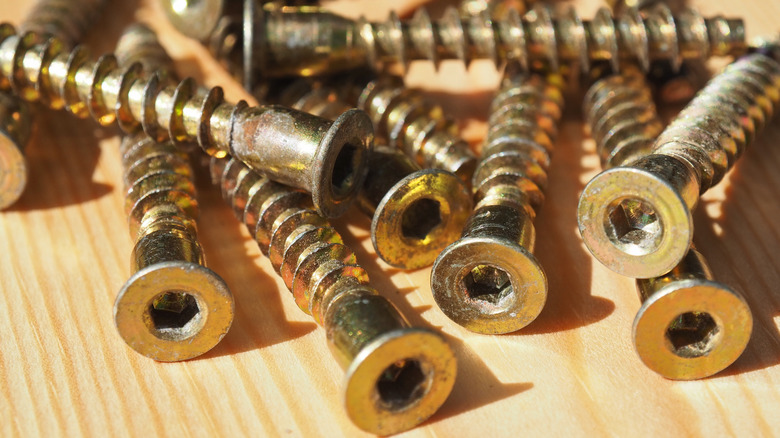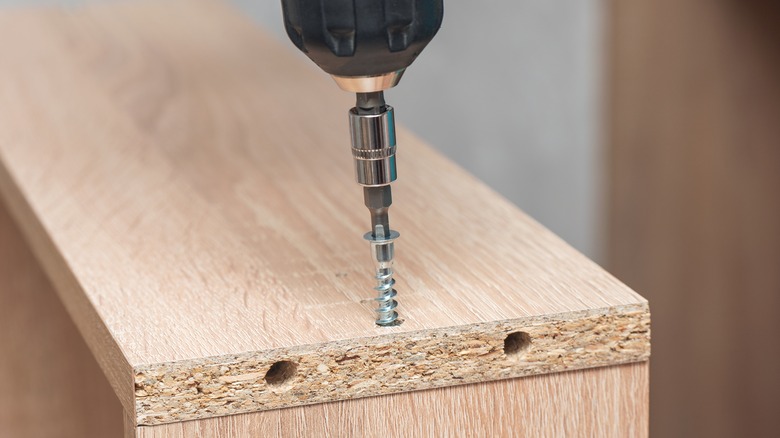What Confirmat Screws Are, And Why Your Cabinets Need Them
We may receive a commission on purchases made from links.
It's puzzling to run across a product that's fairly common, but somehow no one has ever heard of. And when that product has a name like "confirmat screw," it's tempting to think someone in the Fastener-Naming Industrial Complex is having a laugh at your expense. Even though your local big-box hardware store probably has them, you might have trouble getting help in finding these stout little screws, because the vast majority of confirmat screws are supplied by the manufacturers of the furniture they are used in ... mostly cabinets. These are a particular type of assembly screw designed for butt joints in melamine, chipboard, MDF, and similar materials, and they're very good at their job. While you can use them to assemble your own home-brewed projects, few do. However, there are a couple of important situations in which you should be familiar with confirmats, when to use them, and what to do if you don't have them.
Let's start with what they are: a wide-shanked screw with aggressive threads, which function like a cross between a dowel and a screw. Most longer confirmats have a thick shoulder just below a narrow head. The shoulder is designed to help hold the material in position. They're blunt on the end that's usually pointy, and the head is usually either 3mm hex or Pozidriv, for which you can use a Phillips head screwdriver.
When and how to use a confirmat screw
Confirmat screws lend holding power to materials like MDF that usually don't do a great job of grabbing onto screw threads, so you're likely to encounter them in cabinets and flat-pack or knock-down furniture. While you might find the longer confirmats when assembling or disassembling cabinets, you're most likely to see the shorter variety (often fully threaded, and therefore missing the unthreaded shoulder) when fixing broken cabinet hinges and drawer slides. These screws are most often used with concealed European-style hinges, but they might be used with any type of cabinet hinge. These often thread directly into pre-drilled blind holes used for shelf pins. If one of these has been stripped out, perhaps accompanied by a child's Tarzan yell, your best bet is to repair it by gluing in a segment of wood dowel and using a wood screw instead of a confirmat.
If you're starting a new confirmat screw rather than replacing one, you'll need to drill a pilot hole through both boards to be joined. Because of the thicker-than-usual shank, they require a comparatively large-bore, countersunk pilot hole (the most common shank diameters are 6.4 and 7 mm). Because of the flared head, the wide shoulder, and the thick shank, special stepped bits like this one from Amazon are made specifically for installing confirmat screws. It's especially important to position confirmat pilot holes precisely, so it's a good idea to use all the best tricks for drilling perfect pilot holes.

